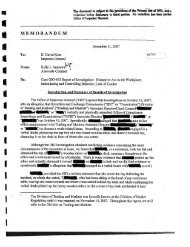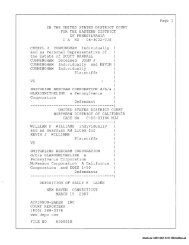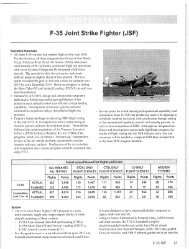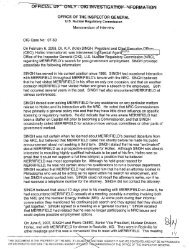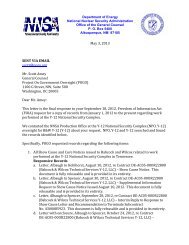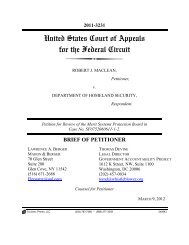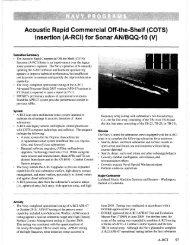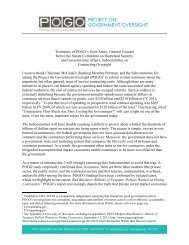The Pentagon Labyrinth
The Pentagon Labyrinth
The Pentagon Labyrinth
Create successful ePaper yourself
Turn your PDF publications into a flip-book with our unique Google optimized e-Paper software.
and captains who fought and won the battle. <strong>The</strong> other is a story of failed<br />
generalship, one that explains why Iraq's Republican Guard escaped, ensuring<br />
that Saddam Hussein's regime survived and America's war with Iraq dragged on.<br />
Certain to provoke debate, this is the latest book from the controversial and<br />
influential military veteran whose two previous books, Breaking the Phalanx<br />
and Transformation Under Fire, are credited with influencing thinking and<br />
organization inside America's ground forces and figure prominently in current<br />
discussions about military strategy and defense policies.”<br />
Bruce Porter, War and the Rise of the State (Free Press, 2002). Bruce<br />
Gudmundsson describes it as laying out the interrelationship between the rise of<br />
the state as an institution and the way that wars have been fought in the past five<br />
centuries. In doing so, it makes the classic argument that the modern state and<br />
modern armies grew in tandem and that, in particular, the welfare state is largely<br />
a product of the total wars of the 20th century.<br />
Russell F. Weigley, <strong>The</strong> American Way of War: A History of United States<br />
Military Strategy and Policy (Indiana University Press, 1977). <strong>The</strong> book argues<br />
that there are two distinct traditions in the way the United States fights wars, one<br />
based upon maneuver and the other upon the massive application of firepower.<br />
In the course of doing this, it also provides an accessible introduction to<br />
American military history.<br />
Insurgency and Fourth Generation Warfare<br />
Suggested Contacts, Reading and Web Sites | 135<br />
Robert B. Asprey, War in the Shadows: <strong>The</strong> Guerrilla in History (Doubleday,<br />
1975). “… survey of guerrilla warfare begins with the struggle between Persian<br />
king Darius and Scythian irregulars and concludes with the mujahedin resistance<br />
to the Soviet invasion of Afghanistan. He discusses how great commanders such<br />
as Hannibal and Napoleon dealt with irregulars and how counterinsurgency<br />
experts such as Sir Gerald Templar during the Malayan Emergency in the early<br />
1950s found ways to defeat the guerrilla.”<br />
Thomas X. Hammes, <strong>The</strong> Sling and the Stone (Zenith Press, 2004). A classic,<br />
this is one of several contemporary quality analyses available on insurgent<br />
warfare.<br />
T.E. Lawrence, Seven Pillars of Wisdom: A Triumph (Anchor, 1991). This is<br />
another classic description of insurgent warfare. Advocates of “Fourth<br />
Generation War” as something entirely new are well advised to review T. E.<br />
Lawrence’s descriptions of it in the First World War.<br />
William S. Lind et al., “<strong>The</strong> Changing Face of War: Into the Fourth<br />
Generation,” <strong>The</strong> Marines Corps Gazette, October 1989. This 1989 article



